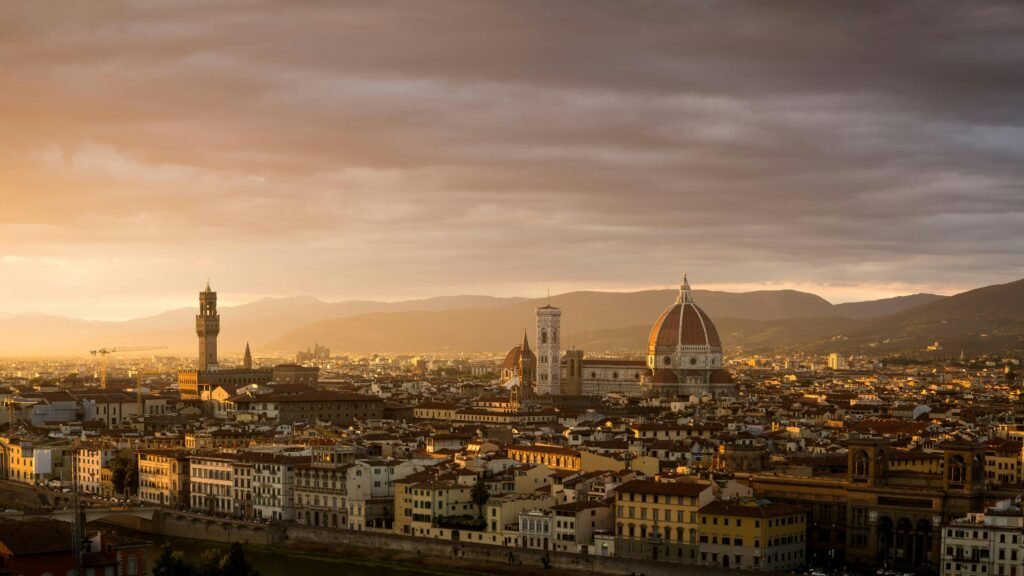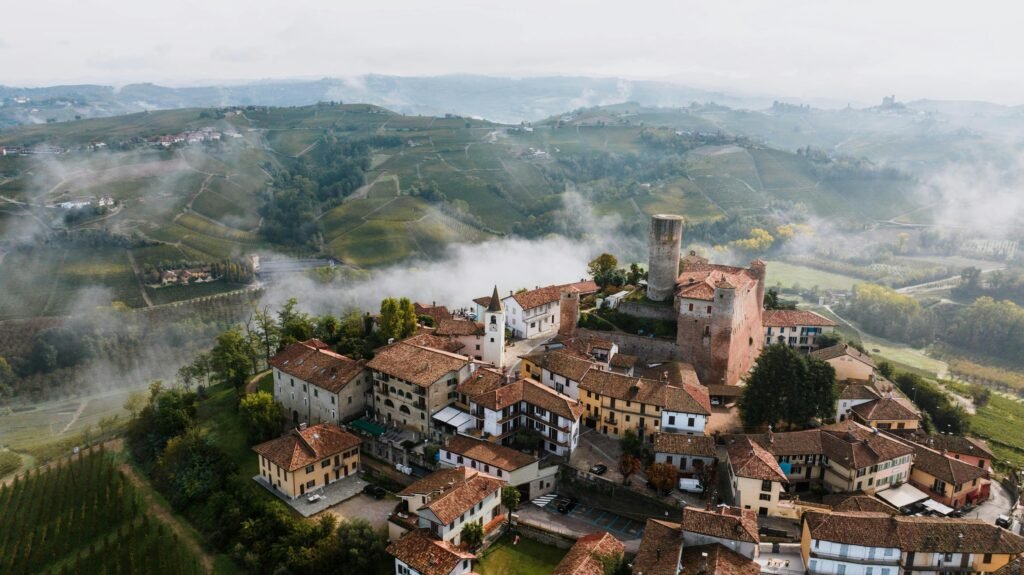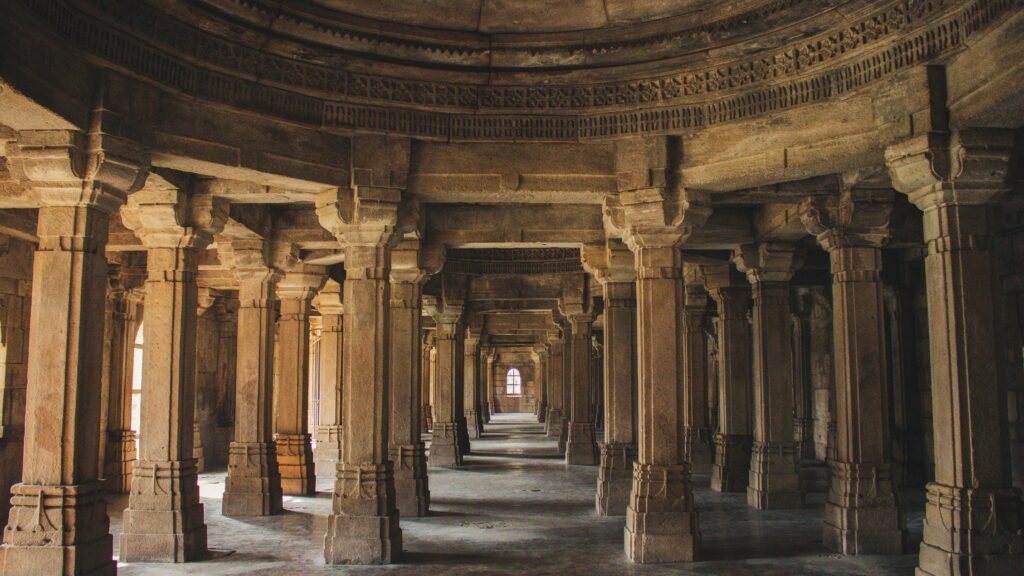Ever gazed up at Florence’s skyline and wondered why it looks like a medieval fortress? You’re not alone!
I remember the first time I stood in Piazza della Signoria, craning my neck to count all those towering stone structures piercing the Tuscan sky. It was overwhelming – and honestly, a bit confusing. Why would a city known for Renaissance art and culture be bristling with what looked like military fortifications?
Here’s the jaw-dropping truth: Florence once had over 200 watchtowers! Today, you can still spot around 60 of these medieval giants scattered throughout the city center. These weren’t just pretty architectural features or tourist attractions – they were weapons of war, symbols of wealth, and the backbone of a centuries-long power struggle that would make Game of Thrones look like a friendly neighborhood dispute.
In this deep dive, we’ll uncover the fascinating story behind Florence’s tower-studded skyline and discover how these stone sentinels shaped one of the world’s most beautiful cities.
The Medieval Tower Wars: When Florence Was a Battleground
The Birth of Tower Warfare
Back in the 12th and 13th centuries, Florence wasn’t the peaceful Renaissance paradise we know today. It was a city at war – not just with outside enemies, but with itself.
I spent months researching this period, and honestly, it’s mind-blowing how chaotic things were. Imagine waking up every morning not knowing if your neighbor’s family was going to declare war on yours! That’s essentially what life was like for Florence’s wealthy families during the medieval period.
The tower-building craze started around 1000 AD when powerful families realized something crucial: height equals might. If you could build higher than your enemies, you could literally look down on them while raining arrows, stones, and boiling oil from above. It was medieval warfare at its most brutal and strategic.
The Great Guelph vs. Ghibelline Conflict
Florence got caught in the middle of one of medieval Europe’s biggest political feuds. The Guelphs supported the Pope, while the Ghibellines backed the Holy Roman Emperor. But here’s where it gets really messy – these weren’t just political parties, they were armed factions that turned the city into a war zone.
Each family built their tower not just for defense, but as a statement. “We’re more powerful than you, and this 200-foot stone tower proves it!” The taller your tower, the more respect (and fear) you commanded. Some families went absolutely nuts with this concept, building towers that reached nearly 250 feet high – that’s about 20 stories!
What really gets me is how these families would form alliances just to take down other families’ towers. They’d literally siege their neighbors’ homes like they were conquering enemy castles.
Powerful Families and Their Stone Fortresses
The Uberti: Masters of Medieval Real Estate
The Uberti family were probably the most tower-obsessed clan in Florence. They didn’t just build one or two towers – they created entire tower complexes that basically turned their neighborhood into a fortress city.
I found records showing they controlled at least 36 towers at their peak! Imagine that level of paranoia and power hunger. They connected their towers with bridges and underground tunnels, creating a medieval version of a gated community that could withstand months of siege.
But here’s the kicker – their tower empire eventually became their downfall. After backing the wrong side in a political conflict, the city government ordered most of their towers destroyed in 1268. Talk about a bad investment!
The Amidei and Their Tower Networks
The Amidei family took a different approach. Instead of building super-tall towers, they focused on creating networks of medium-height towers throughout different neighborhoods. Smart strategy, actually.
They understood something crucial about medieval urban warfare: it’s better to have multiple strongholds than one massive target. Their towers served as communication posts, allowing them to send signals across the city using flags, mirrors, and smoke during daylight hours.
At night, they used torches and bells to coordinate their family’s activities. It was like having a medieval WhatsApp group, but way more dangerous!
Architectural Marvels: How Medieval Builders Reached for the Sky
Engineering Challenges of the 13th Century
Building a 200-foot tower without modern construction equipment? That’s engineering wizardry that still impresses me today.
These medieval architects had to solve problems that would challenge modern builders. How do you create a foundation strong enough to support that much stone weight? How do you transport massive blocks up 15-20 stories without cranes? How do you make sure the whole thing doesn’t just topple over in the first strong wind?
The solution was brilliant in its simplicity. They built these towers with walls that were incredibly thick at the base – sometimes 8-10 feet thick – and gradually tapered toward the top. The bottom floors were essentially solid stone with tiny windows, while upper floors had larger openings for defense.
The Art of Medieval Stone Masonry
What absolutely fascinates me is the precision of these medieval masons. They cut and fitted stones so perfectly that many towers have survived 800+ years with minimal maintenance. No modern concrete, no steel reinforcement – just expertly crafted stone blocks held together with lime mortar.
Each tower took several years to complete and required enormous financial investment. We’re talking about the equivalent of millions of dollars in today’s money. Only the wealthiest families could afford to build these monuments to their power.
The construction process was dangerous too. Historical records mention numerous accidents, including workers falling to their deaths and entire partially-built towers collapsing during construction.
The Great Tower Reduction: When Florence Said “Enough!”
The Ordinances of Justice (1293)
By the late 13th century, Florence’s government had enough of the tower wars. The city looked like a battlefield, and the constant feuding was destroying commerce and daily life.
Enter Giano della Bella and his revolutionary Ordinances of Justice in 1293. This legislation essentially declared war on the tower-building families, but used law instead of violence. Genius move, really.
The ordinances banned nobles from holding major political offices and – here’s the key part – mandated that all towers be reduced to a maximum height of 96 feet (about 30 meters). Anything taller had to be shortened or demolished entirely.
The Physical Process of Tower Reduction
I’ve always wondered: how do you safely demolish the top half of a 200-foot medieval tower? The answer is both ingenious and terrifying.
Medieval demolition crews would start from the top, carefully removing stones layer by layer. They’d use wooden scaffolding and pulleys to lower the massive blocks without damaging nearby buildings. Sometimes they’d weaken the upper structure and let gravity do the work, but this was risky in a densely populated city.
Many families tried to cheat the system by building internal floors that technically reduced the “height” while maintaining the tower’s defensive capabilities. The government caught on pretty quickly and started measuring from ground to roofline, not floor to floor.
Famous Towers That Still Dominate Florence Today
Torre dei Lamberti: The Survivor
One of my favorite towers to visit is Torre dei Lamberti, which somehow managed to keep most of its original height. At around 84 feet, it’s technically within the legal limit, but you can tell it was designed to be much taller.
The Lamberti family were smart – they aligned themselves with the winning political factions and managed to avoid the worst of the tower-reduction mandates. Their tower features some of the best-preserved medieval architecture in the city, including arrow slits, machicolations, and internal spiral staircases.
What’s really cool is that you can still see the original living quarters inside. These weren’t just military structures – families actually lived in these towers, with kitchens, bedrooms, and even private chapels built into the upper floors.
The Bargello Tower: From Prison to Museum
The Bargello’s tower has one of the most fascinating histories in Florence. Originally built as a private family fortress, it later became the city’s main prison and courthouse. The irony is perfect – a symbol of family power transformed into a symbol of government authority.
I spent an afternoon exploring the Bargello Museum, and you can still see medieval graffiti carved into the tower walls by prisoners. Some inscriptions date back to the 14th century, offering a haunting glimpse into the lives of people who were locked away in this stone giant.
The tower’s bells once announced executions in the courtyard below. Today, they mark museum opening hours – a much more peaceful purpose!
Palazzo Vecchio: The Government’s Answer
Palazzo Vecchio’s tower (Torre d’Arnolfo) represents the government’s response to private tower-building. Completed in 1322, it rises 308 feet – deliberately taller than any private tower ever built in Florence.
The message was clear: “We are the ultimate authority in this city, and our tower proves it.” The government was essentially playing the same power game as the feuding families, just with bigger resources and legal backing.
Standing in Piazza della Signoria and looking up at Torre d’Arnolfo, you can feel the weight of that medieval power statement. It’s still the tallest structure in Florence’s historic center, a constant reminder of who won the tower wars.
The Economic Impact of Tower Building
Medieval Construction Costs
Building a tower in medieval Florence was like buying a private jet today – an extreme luxury that showcased wealth while serving practical purposes.
Based on historical records I’ve studied, a medium-sized tower (around 130 feet) cost approximately 1,000-1,500 florins to build. To put that in perspective, a skilled craftsman earned about 15 florins per year. We’re talking about 75-100 years of a worker’s wages for a single tower!
The economic impact extended far beyond the initial construction costs. Families had to maintain these structures, staff them with guards, and equip them with weapons and supplies. It was an ongoing expense that could bankrupt even wealthy merchants if they weren’t careful.
The Rise of Specialized Trades
The tower-building boom created entire industries in medieval Florence. Master masons, stone carvers, crane operators, and military engineers all found steady work thanks to the architectural arms race.
What’s fascinating is how this construction boom helped develop many of the skills that would later make Florence famous during the Renaissance. The same families funding tower construction would later commission churches, palaces, and public buildings. The Medici, for example, learned valuable lessons about architecture and urban planning from the tower period.
Many of the techniques developed for tower construction – including advanced masonry, architectural planning, and project management – directly contributed to Florence’s later architectural achievements like the Duomo and Palazzo Pitti.
How Towers Shaped Florence’s Urban Layout
Medieval City Planning by Necessity
Florence’s seemingly chaotic medieval street layout makes perfect sense when you understand the tower system. Streets weren’t planned by city officials – they evolved around the defensive needs of feuding families.
I love walking through the Oltrarno district and seeing how narrow, winding streets suddenly open into small squares. These weren’t random design choices – they were strategic defensive positions. Narrow streets could be easily blocked and defended, while the small piazzas provided space for tower foundations and courtyards.
Many of Florence’s most famous squares exist because towers once stood there. When towers were demolished or collapsed, the empty space became public areas. Piazza della Repubblica, for example, sits on the site of several medieval tower complexes.
The Bridge Connection System
Here’s something most tourists never notice: many of Florence’s medieval towers were connected by bridges and elevated walkways. Families could move between their properties without ever setting foot on street level.
Some of these connecting bridges still exist! If you know where to look (and I’ll give you a hint – check out the area around Via Por Santa Maria), you can spot stone archways and structural supports that once held wooden bridges between tower complexes.
This system essentially created a second city above street level – a medieval highway network reserved for the wealthy and powerful. Meanwhile, common citizens lived and worked in the shadowy streets below, literally living in the shadow of their social superiors.
The Social Dynamics of Tower Life
Living Vertically in Medieval Florence
Imagine organizing your entire life around vertical space. That’s what tower families had to do, and it created some fascinating social dynamics.
The ground floor was typically reserved for business – shops, workshops, or storage. The second and third floors housed servants, guards, and extended family members. The family patriarch and his immediate family lived on the upper floors, which were considered safer and more prestigious.
The very top of the tower served multiple purposes: watchtower, signal station, and final defensive position during sieges. Some families built elaborate rooftop gardens up there – medieval penthouses with a view!
Women in Tower Society
Tower life created unique challenges for medieval women. While they were better protected from street-level violence, they were also more isolated from the broader community.
Historical records show that women from tower families developed their own communication networks, using servants, marriage connections, and religious activities to maintain social connections across the feuding city. Some became skilled in managing the complex logistics of tower life, essentially serving as medieval CEOs of their family enterprises.
During sieges, women played crucial roles in defense – preparing supplies, tending to wounded defenders, and sometimes taking direct part in combat when their towers were attacked.
The Decline of Tower Culture
Changing Warfare and Technology
By the 14th century, military technology was making towers less effective as defensive structures. Improved siege engines, early cannons, and new tactical approaches made tall, narrow fortifications vulnerable rather than advantageous.
Smart families began investing in different types of properties – horizontal palaces with gardens, commercial buildings, and rural estates. The age of vertical power display was ending, replaced by Renaissance ideals of architectural beauty and artistic patronage.
The Black Death (1347-1351) also played a role. The plague killed so many people that many tower-owning families simply disappeared. Their properties were abandoned, sold, or absorbed by the government.
The Renaissance Transformation
As Florence entered the Renaissance, the city’s aesthetic values shifted dramatically. Towers were seen as outdated symbols of a violent, chaotic past. The new ideal was harmony, proportion, and beauty – qualities that medieval fortress-towers definitely lacked.
Many families voluntarily lowered their towers or converted them into more conventional residential buildings. Others sold their properties to emerging Renaissance architects who incorporated the strong stone foundations into new palazzo designs.
This transformation wasn’t always smooth. Some families clung to their towers as symbols of ancient prestige, creating an ongoing tension between old military aristocracy and new merchant wealth that would define Florence’s social dynamics for generations.
Modern Preservation Efforts
Challenges of Maintaining Medieval Structures
Today’s Florence faces unique challenges in preserving its medieval tower heritage. These 700-800 year old structures require constant maintenance, and modern building codes create complications for property owners.
I’ve talked with several conservation architects working on tower restoration projects, and the challenges are immense. How do you install modern electrical systems and plumbing in walls that are eight feet thick? How do you meet earthquake safety standards while preserving historical authenticity?
Many towers have been converted into luxury apartments, offices, or small hotels. While this provides income for maintenance, it also raises questions about preserving the historical integrity of these structures.
Tourism vs. Preservation
Florence’s towers have become major tourist attractions, which creates both opportunities and problems for preservation. Tourism revenue helps fund restoration projects, but the constant flow of visitors also accelerates wear and tear on ancient stone structures.
Some privately-owned towers have been opened to the public for guided tours, providing fascinating insights into medieval life while generating income for maintenance. Others remain private residences, their owners struggling with the costs of maintaining historical properties.
The city government has implemented various incentive programs to help tower owners with restoration costs, recognizing that these structures are crucial to Florence’s identity and economic appeal.



